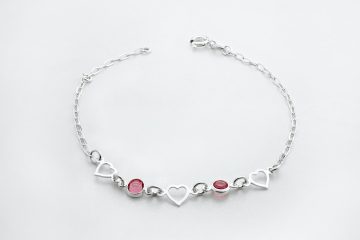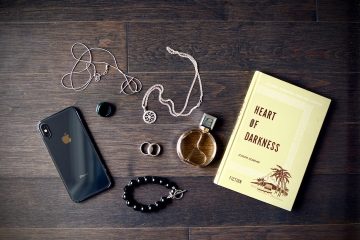Introduction
Copper bracelets have gained popularity in recent years for their alleged health benefits and stylish appearance. These bracelets are believed to help with various conditions, including arthritis, joint pain, and inflammation. However, with so many options available in the market, selecting the best copper bracelet for your needs can be overwhelming. In this ultimate guide, we will explore the factors you should consider when choosing a copper bracelet, the benefits it may offer, and how to properly care for your copper jewelry.
1. Understanding the Benefits of Copper Bracelets
Copper has been used for centuries due to its believed health benefits. Copper is an essential mineral that our bodies need to function properly. It is involved in various bodily processes, including the production of collagen, absorption of iron, and maintenance of healthy bones and connective tissues. When copper comes into contact with the skin, it is believed to be absorbed into the body, which may help alleviate certain health conditions.
However, it is important to note that scientific evidence supporting the health benefits of copper bracelets is limited. While some people claim to experience relief from symptoms such as arthritis pain, the placebo effect may also play a role. It is always advisable to consult with a healthcare professional before relying solely on copper bracelets for medical conditions.
2. Choosing the Right Style
When it comes to copper bracelets, there are numerous styles available to suit different tastes and preferences. Some bracelets are simple and minimalist, while others may feature intricate designs and embellishments. Consider your personal style and the occasion for which you plan to wear the bracelet. A sleek and understated design may be more suitable for everyday wear, while a more elaborate bracelet can make a statement for special occasions.
Additionally, consider the size and fit of the bracelet. Copper bracelets should fit comfortably on your wrist without being too tight or too loose. Measure your wrist size accurately and check the sizing guidelines provided by the manufacturer before making a purchase.
3. Quality and Purity of Copper
The quality and purity of copper used in the bracelet are crucial factors to consider. Opt for bracelets made of high-quality copper that is at least 99% pure. This ensures that you are getting the maximum potential benefits from the bracelet.
It is also important to ensure that the copper bracelet is free from harmful substances such as lead or nickel. These metals can cause skin irritation or allergic reactions in some individuals. Look for bracelets that are labeled as “lead-free” and “nickel-free” to minimize the risk of any adverse reactions.
4. Consider the Bracelet’s Design and Construction
Apart from the style, the design and construction of the bracelet also play a significant role in its durability and comfort. Look for bracelets that are well-crafted and have a sturdy clasp or closure mechanism. This ensures that the bracelet stays securely on your wrist and reduces the chances of accidental breakage or loss.
Inspect the bracelet for any sharp edges or rough surfaces that may cause discomfort or irritation. A smooth and well-finished bracelet will be more comfortable to wear for extended periods.
5. Assessing the Bracelet’s Weight
The weight of the copper bracelet is another important consideration. Some individuals prefer lightweight bracelets that are barely noticeable on the wrist, while others may prefer a slightly heavier feel. The weight of the bracelet can also be an indicator of its quality and durability. A heavier bracelet typically indicates a higher copper content and better craftsmanship.
Try on different bracelets to get a sense of their weight and how it feels on your wrist. Ultimately, choose a weight that feels comfortable and suits your personal preference.
6. Research Reviews and Customer Feedback
Before purchasing a copper bracelet, take the time to research and read reviews from other customers. This will give you insights into the quality, durability, and effectiveness of the bracelet you are considering. Look for trusted sources such as reputable websites or forums where users share their experiences.
Pay attention to both positive and negative reviews to get a balanced view. Keep in mind that individual experiences may vary, so consider the overall consensus rather than relying on a single review.
7. Consider Your Budget
Copper bracelets come in a wide range of prices, so it’s essential to determine your budget before making a purchase. While higher-priced bracelets may offer better quality and craftsmanship, there are also affordable options available. Set a budget that you are comfortable with and explore different brands and styles within that range.
Remember that the price should not be the sole determining factor. Focus on finding a copper bracelet that meets your needs in terms of style, quality, and comfort within your budget.
8. Properly Caring for Your Copper Bracelet
To ensure the longevity and beauty of your copper bracelet, it is important to care for it correctly. Copper naturally tarnishes and develops a patina over time. Some individuals appreciate the rustic look that develops, while others prefer to maintain the original shine. Here are some tips for caring for your copper bracelet:
– Avoid exposure to water
: Remove your copper bracelet before swimming, showering, or engaging in activities that may expose it to excessive moisture. Water can speed up the tarnishing process.
– Keep it clean
: Regularly clean your copper bracelet using a soft cloth or a specialized copper cleaning solution. Gently wipe away any dirt or oils that may accumulate on the surface.
– Store it properly
: When not wearing your copper bracelet, store it in a dry and airtight container to minimize exposure to moisture and air. This helps slow down the tarnishing process.
– Avoid harsh chemicals
: Avoid using harsh chemicals or abrasive cleaners on your copper bracelet, as they can damage the surface and remove the protective patina.
9. Conclusion
Choosing the best copper bracelet for your needs involves considering factors such as style, quality, purity, and comfort. While the health benefits of copper bracelets are still debated, many individuals find them aesthetically pleasing and enjoy wearing them as fashion accessories. Remember to consult with a healthcare professional for any medical concerns and conduct thorough research before making a purchase.
By taking the time to explore different options, considering your preferences and needs, and properly caring for your copper bracelet, you can enjoy the potential benefits and beauty of this timeless piece of jewelry.
10. FAQ
Q1: Are copper bracelets suitable for everyone?
A1: Copper bracelets may not be suitable for individuals with certain allergies or skin sensitivities. It is important to check for any allergic reactions or discomfort when wearing a copper bracelet for the first time.
Q2: Can copper bracelets help with arthritis pain?
A2: While some individuals claim to experience relief from arthritis pain when wearing copper bracelets, scientific evidence supporting this claim is limited. It is advisable to consult with a healthcare professional for appropriate arthritis management.
Q3: How long does it take for a copper bracelet to tarnish?
A3: The time it takes for a copper bracelet to tarnish varies depending on factors such as air humidity, exposure to moisture, and individual body chemistry. Regular cleaning and proper storage can help slow down the tarnishing process.
Q4: Can I wear a copper bracelet while exercising?
A4: Copper bracelets are generally safe to wear during exercise, but it is advisable to remove them before activities that may cause excessive sweating or exposure to water. Sweat and moisture can speed up the tarnishing process.
Q5: Can I wear a copper bracelet with other jewelry?
A5: Copper bracelets can be worn alongside other jewelry pieces, but be cautious of metals that may cause a chemical reaction with copper, such as silver or gold-plated jewelry. It is advisable to wear copper bracelets on separate wrists or alternate them with other jewelry.




